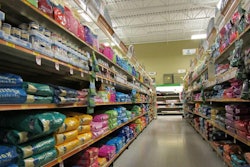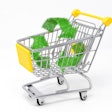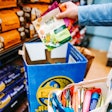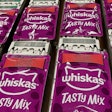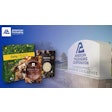
Editor’s Note: This piece, focusing on packaging, is the first in a two-part series highlighting sustainability developments in various segments of the pet food industry.
Sustainability has awakened the pet food industry. Beginning as a trend that spilled into the premium pet space from the human food sector, it is now a movement that has the whole industry taking a hard look at all the steps of its production process from ingredient sourcing to packaging and shipping.
And there’s good reason to bring everything under a microscope. According to Nielsen consumer data presented by the Pet Sustainability Coalition in its 2020 report, “20 Sustainable Brands Your Customers Will Love,” 90% of millennials — a demographic with significant purchasing power in the pet space — are willing to pay more for sustainable products. In addition, consumers want to know the companies they do business with are trying to better the world around them: 79% of consumers said they would be more loyal to a purpose-driven company and 77% said they feel stronger emotional ties to purpose-driven companies, according to data from Porter Novelli, a global purpose communications consultancy firm.
Packaging: a visible commitment to pet food sustainability
It’s understandable that packaging is in the limelight in terms of consumer sustainability demands. It’s the very visible representation of a product that potential purchasers see first when they’re researching pet food or shopping for their typical brand. Additionally, “packaging” in general is something consumers have been trained to believe can almost always be recyclable — the bottom floor for sustainability practices that now encompass everything from reduce/reuse/recycle to traceability standards and clean labeling.
Of course, with all the safety and shelf life requirements for many of the products in the pet food industry, changing the packaging hasn’t necessarily been a simple ask.
“This movement to sustainable packaging solutions is a significant shift for the industry,” said Mark Liberman, vice president of sales and market for Peel Plastics Products Ltd., a custom packaging solutions provider that focuses on pouches. “Fortunately, the level of collaboration is unprecedented. Suppliers, trade associations, brand owners and competitors all understand that our best chance at success is by working together. Right now we’re all striving to clearly define and understand the policies, pledges and commitments that will help govern the definition of sustainable packaging solutions.”
Peel’s product portfolio includes a “Think Green” line of packaging options that focuses on bio-based materials (specifically sugarcane), recyclable pouches and post-consumer recycled (PCR) materials.
There has been a lot of industry discussion around the mechanical challenges of sustainable pet food packaging. Is the technology there? Can it keep up with consumer demands? The industry seems intent on finding out.
“Packaging suppliers have invested significantly in package sustainability improvements such as improved recyclability,” said Bill Kuecker, vice president of marketing for Mondi Consumer Packaging, a producer of paper and plastic solutions with a focus on sustainability packaging requirements. “There are commercial pet food packaging options in the U.S. today that are compatible with the efficiencies needed by today’s manufacturers. They offer store drop-off program recyclability, industrial compostability and post-consumer recycled content.”
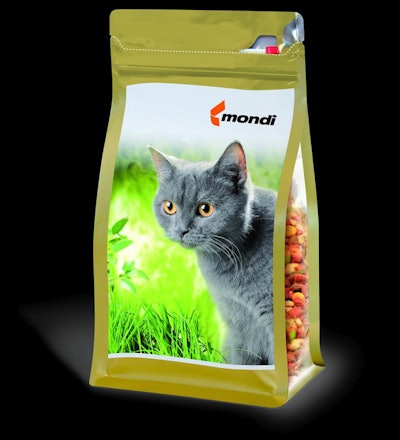
Recent research conducted by Mondi and Dow indicate that consumers’ high package-performance expectations must also be considered when studying sustainability, particularly in smaller packaging (such as cat food). | Courtesy Mondi Consumer Packaging
Mondi’s philosophy is “Sustainable by Design,” which takes a three-pronged approach: include sustainability at the heart of the company’s strategy, ensure that sustainable operations continue across the value chain, and help customers find the right sustainable solutions for their needs.
The challenges of meeting all industry packaging needs
Recyclable. Flexible. Reusable. What’s available and what’s being developed are only part of the sustainable packaging picture, as pet food manufacturers must determine which avenue of sustainability makes the most sense for their products.
“It really comes down to understanding what the market needs are,” said Justin Zagorski, marketing analyst for Terphane, a global manufacturer of specialty polyester films. “Different brand owners will require different things and providing options for everyone certainly poses a difficult challenge.”
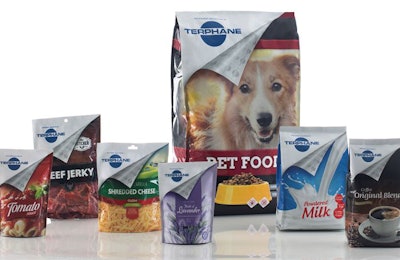
Terphane’s focus is on educating the marketplace and helping everyone understand their options so they can make the best packaging decisions for not only their business, but the world as a whole. | Courtesy Terphane
Terphane has an “Ecophane” line of sustainable polyester films that align with the Circular Economy concept (disposable polyester packaging and other products are collected, recycled and become new packaging). The line is created with a minimum of 30% post-consumer recycled polyester in its composition.
As always, the requirements of pet food brands are the result of what consumers are requesting as part of the final product.
“Increasing consumer demand for premium-quality products has led manufacturers to use high-quality materials and ingredients while streamlining their production techniques and processes, with the corresponding need for appropriate quality packaging to reflect this premium image,” said Kaitlyn Wyatt, brand supervisor for Proseal America. Proseal designs and manufactures tray sealing machines, conveyor systems and sealing tools for food industry markets, and became part of the JBT Corporation in 2019.
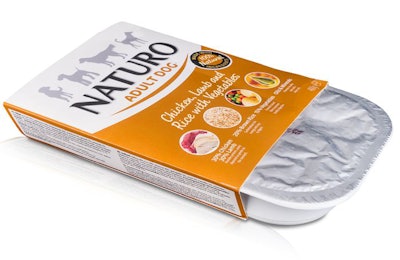
Proseal aims to provide solutions for companies requiring an upscale in their production of core products in new packaging formats which could be met on one machinery platform, allowing for flexibility in adaptation to packaging trends. | Courtesy Proseal America
Succeeding in sustainable packaging
The demand and need for sustainability in pet food packaging are already present; the question that needs answering is what ways each company involved in packaging can best contribute.
“The key will be educating people on the difference between biodegradable, compostable, PCR and all the various options available,” said Zagorski. “None of them are right or wrong, because we’re all headed in the right direction. It’s really just a matter of weighing goals and needs versus cost and effectiveness.”
The solutions, according to the industry, require a longer view.
“The trend toward sustainable pet food packaging will continue in 2021 and beyond,” said Kuecker. “Innovative brands will continue wanting to have their packaging consistent with the social values they espouse and the quality of their pet food product.”
That view, in turn, requires a solid strategy to ultimately see success.
“The development and transition to sustainable packaging will be a long-term project,” said Liberman. “We’re convinced that we’ll all make incremental progress each year; however, it takes a well-defined strategy to implement a change of this scale.”




